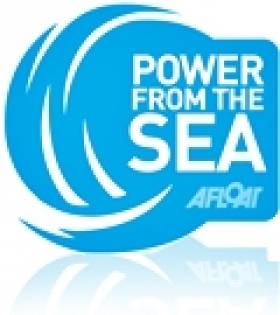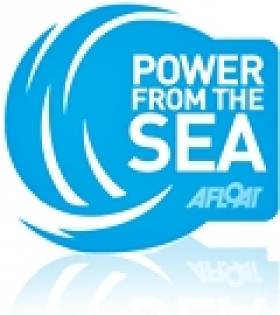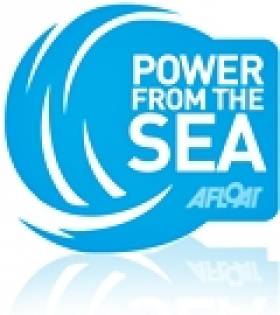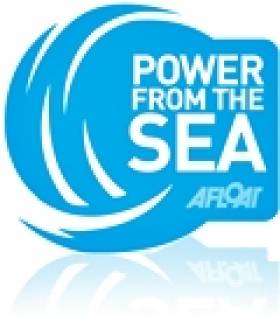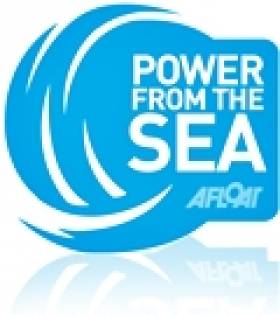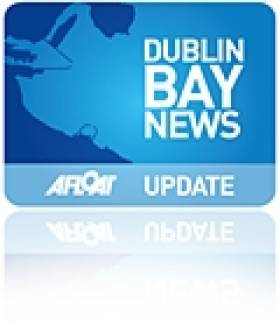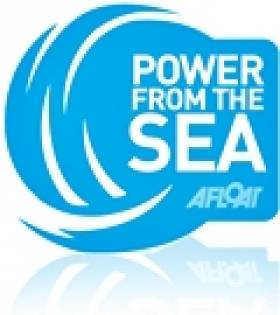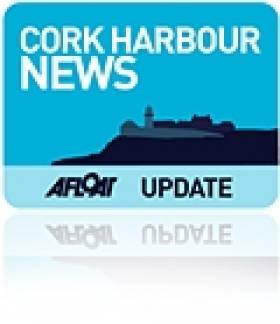Displaying items by tag: sustainable energy
Cork Company Set to Deploy Energy Device at Cornwall's Wave Hub
#POWER FROM THE SEA - An Irish firm has landed a contract to provide a wave device for a new offshore energy test site in Cornwall, Siliconrepublic reports.
Ocean Energy, which is based in Cork, will deploy its first full-scale wave energy device at Wave Hub - described as an 'electrical socket' for testing wave power technology - off Hayle in north Cornwall by the end of the year.
The technology behind the buoy-type device, which will cost €9 million, has been developed over the past three years via a quarter-scale prototype in Galway Bay.
Using the principle of the oscillating water column, the device works by channeling water through a submerged chamber that forces air through a turbine above the surface.
The full-scale unit is expected to generate enough electricity to power as many as 1,200 homes.
Siliconrepublic has more on the story HERE.
UCC Wave Energy Trials Central to New Maritime Cluster
#POWER FROM THE SEA - A €9 million Europe-wide wave energy trial programme is one of the key elements of a new Government programme designed to transform Ireland as a maritime nation.
According to The Irish Times, University College Cork's Hydraulics and Maritime Research Centre will run testing of wave energy, tidal energy and offshore wind energy devices across a network of sites in 12 European countries participating in the new marine renewables infrastructure network Marinet.
Irish test sites in the network include the national ocean test facility in Cork and centres operated by the Sustainable Energy Authority of Ireland (SEAI) at Galway Bay and Belmullet.
The UCC centre also forms part of the new Irish Maritime and Energy Resource Cluster (IMERC), launched last Friday by Taoiseach Enda Kenny.
The cluster comprises UCC, the Irish Naval Service, Cork Institute of Technology and the National Maritime College of Ireland with the initial aim of creating 70 new research jobs by 2014 in the areas of wave energy, green shipping and sustainability of ocean resources.
IMERC director Dr Val Cummins said: “The aim of IMERC is to promote Ireland as a world-renowned research and development location that will unlock Ireland’s maritime and energy potential."
The Irish Times has more on the story HERE.
- Irish Naval Service
- maritime
- Cork
- Galway Bay
- Belmullet
- National Maritime College of Ireland
- wind energy
- UCC
- Cork Institute of Technology
- renewable energy
- wave energy
- sustainable energy
- tidal energy
- network
- testing
- Sustainable Energy Authority of Ireland
- Taoiseach Enda Kenny
- SEAI
- Hydraulics and Maritime Research Centre
- Marinet
- devices
- Irish Maritime and Energy Resource Cluster
- IMERC
- Dr Val Cummins
New Scheme to Measure Noise Pollution from Wave Energy
#POWER FROM THE SEA - The Sustainable Energy Authority of Ireland (SEAI) is teaming with IBM in a new project to assess the noise levels of wave energy devices off the Irish coast.
The scheme will see an array of noise sensing equipment such as hydrophones deployed in Galway Bay to monitor the noise levels of wave energy conversion devices in real time, as well as map patterns of marine life in the area.
According to AOL Energy, noise pollution at sea is a chief concern, having a disturbing effect on fish migrations among other marine ecosystems.
The west of Ireland will prove an important case study in this regard, as it hosts one of the world's largest wave energy infrastructures.
"Underwater noise is a global environmental issue that has to be addressed if we are going to take advantage of the huge potential of ocean energy," said EU Commissioner for Research, Innovation and Science, Maire Geoghegan-Quinn.
AOL Energy has more on the story HERE.
New Machines Changing the Rules for Wave Power
New Scientist has highlighted some of the latest technologies being developed to harness power from the sea.
Companies such as Pelamis Wave Power and Aquamarine Power are already testing prototypes of their so-called wave energy 'harvesters' - enormous machines that can capture the massive potential energy stored within ocean waves.
Pelamis' huge P2 is filled with state-of-the-art computers that allow programmers to control and update its operations on the fly, quickly taking advantage of changes in sea conditions to maximise energy production and increase efficiency.
The proof is in the pudding, as P2 can produce 750 kilowatts of power - twice as much as earlier prototypes.
Aquamarine's Oyster 800, meanwhile, can generate an incredible 800 kilowatts by way of a giant hinged flap that juts out of the water. Each passing wave closes the flap shut like a clamshell, with the resultant hydraulic pressure driving an onshore turbine.
"If you can get that sort of level of performance improvement then the economics suddenly start to look a lot more favourable," says The Carbon Trust's Stephen Wyatt.
New Scientist has more on the story HERE.
Ireland Risks Missing Out On Renewable Energy Benefits
Ireland must do more to develop its port and shipping services or risk missing out on the benefits of the growning renewable energy sector.
That was the message from a new analysis compiled by the Sustainable Energy Authority of Ireland and the Irish Maritime Development Office, as reported by Renewable Energy Magazine.
The current lack of supply services and equipment for renewables in Irish ports could threaten the country's promise in the fields of offshore wind, tidal and wave energy, the report states.
It is estimated that the total value of such renewable energy sectors could be as much as €16 billion.
The east coast has been identified as the best location for offshore wind and tidal projects, while the south and west coasts were best for wave power and wind farms.
“We now need to look at the investment in infrastructure required if we are to properly capitalise on the current opportunities in this area," said the report.
Renewable Energy Magazine has more on the story HERE.
Plan to Power Edinburgh with Giant Windfarm
Plans are afoot to power Edinburgh with a giant offshore windfarm, the Edinburgh Evening News reports.
The £1.2 billion (€ 1.37 billion) project proposed by Irish group Mainstream Renewable Power could see as many as 130 turbines generate power for up to 335,000 homes.
The turbines would be installed 30km north of Dunbar, East Lothian, though a number would be visible from the coastline.
Concerns have been raised by East Lothian residents at a consultation hearing regarding the environmental impact of the project, dubbed Neart na Gaoithe (might of the wind), though wildlife and environmental surveys are still being carried out.
Any final go-ahead on the windfarm scheme would have to be given by the Scottish government.
As previously reported on Afloat.ie, Mainstream Renewable Power - headed by Eddie O'Connor - has signed deals for windfarms in South Africa and Alberta province in Canada.
The Evening News has more on the story HERE.
New Mammal Detection Sonar System for Sea Turbines
The latest product from sonar technology company Tritech is a mammal detection system for use around underwater turbines.
According to the manufacturers, the Gemini SeaTec system uses a multi-beam sonar and image detection software to provide real-time monitoring and warning of sea mammals in the vicinity of subsea turbines, allowing operators to take corrective action.
The system also logs valuable data that may be used for environmental assessment in any sea turbine development project.
Tritech's system is already installed on the SeaGen tidal turbine in Strangford Lough in Northern Ireland. The system also has future possible applications in cable lay survey operations and general subsea monitoring.
For more details visit the Tritech website.
Dublin Array Developer Applies for Foreshore Lease
A foreshore lease application has been lodged for a series of offshore wind farms in Dublin Bay.
The Dublin Array, to be situated on the Bray and Kish Banks some 10km from the coast, would consist of 145 turbines, each 160m high, operated by Saorgus Energy Ltd.
The project has been criticised by the Coastal Concern Alliance due to its approval in contravention of an EU directive that requires a strategic environmental assessment.
Further details are available at www.saorgus.com and www.coastalconcern.ie.
'Underwater Kite' a Clean Energy Solution
An 'underwater kite' developed by a Swedish company could be a simple answer to harnessing the power of the sea, The Local reports.
The Deep Green device looks like a toy kite with a turbine attached. But when tethered to the seabed and carried by the ocean currents, it can harness energy at a much more efficient rate - 800 times greater - than surface-based turbines.
Minesto, the company behind the project, claims it can generate 500 kilowatts of power even in calm conditions.
A scale model of the Deep Green system, which was included in Time Magazine's 50 Best Inventions of 2010, will be unveiled later this year off the coast of Northern Ireland.
It will provide an opportunity for testing in real ocean conditions, as well as evaluating the potential impact on marine life below the surface.
“We are confident once successful trials have been carried out for it to be commercially operative by 2013,” said Minesto CEO Anders Jansson.
Sweden's The Local has more on the story HERE.
The winners of the 2011 Port of Cork Schools Initiative have been announced.
St John the Baptist National School in Midleton took the prize for best project in this year's contest, with the theme of ‘Making Cork Harbour a Green Energy Hub for our Future’.
Fifth classes from more than 60 primary schools in the Cork area got creative for the project, some even producing whole scale models of Cork Harbour.
Chairman of the Port of Cork, Dermot O’Mahoney, said: "We are delighted with the efforts put in by the participating schools. This is a great way of educating school children on the different forms of energy within Cork harbour while also highlighting the role of the Port of Cork."
Every participating class will be invited for a visit to Customs House in Cork city with a boat trip around the harbour before the end of the summer term. As top prize winners, pupils from St John the Baptist will get to visit one of the many luxury cruise liners that call at the port.
All projects are currently on display in the reception of Customs House.


























